Astronautics 2016 on Geektimes, part 3
We continue to recall the main themes from the world of cosmonautics, which we talked about in the past 2016. Rocket explosions at launch sites and on the territory of Moscow, the discovery of “Fila” on the comet Churyumov-Gerasimenko, a new Chinese orbital station and other successful and not-so-great events - in the third and final part of Cosmonautics 2016.
→ Astronautics 2016 on Geektimes, part 1
→ Astronautics 2016 on Geektimes, part 2

September 2016 for the space company Ilona Mask SpaceX began with an accident. At the launch site on Cape Canaveral, in preparation for the launch of the Falcon 9 rocket, an explosion occurred . In the analysis of the possible causes of the incident from lozga , components are leaked and short-circuited, leakage from the ignition system, impaired oxygen purity and erroneous detonation system operation. The main version of SpaceX experts called helium leakage in the cryogenic system of the second-stage oxygen tank of the rocket.
')
Together with the Falcon 9, the Israeli telecommunications satellite Amos-6 was destroyed. He was to go into orbit on September 3 to replace his outgoing Amos-2, as well as work for Facebook as part of the Internet.org project.
Failure SpaceX was on hand to competitors of the company - United Launch Alliance (ULA). The head of ULA was confident that SpaceX would be Earth bound for several months. But Musk has scheduled new launches as early as November 2016.

September 2, it became known about the unsuccessful launch of the Chinese rocket Long March 4C. Usually, the media in this country announce space launches only 40 minutes after a successful launch, but this time they remained silent for two days.
Fragments of the first stage were found 600 kilometers from the start, and 1050 kilometers from the cosmodrome found the remains of the head fairing.

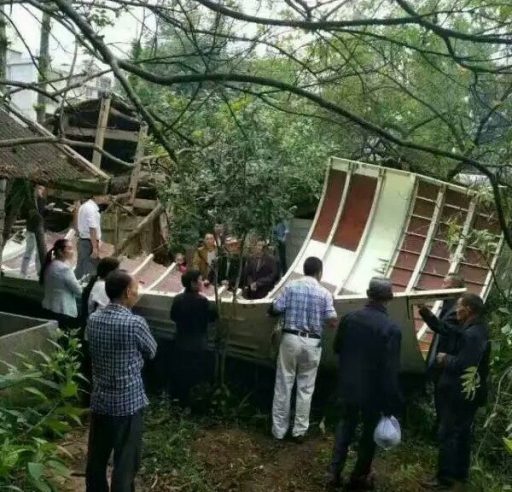
Phillip Terekhov lozga gave a lecture on “ Subtle complications of space technology” , where he spoke about the intricacies of transporting a rocket, starting an engine without an explosion and how not to get lost in space.
Independent scientist José Rodal confirmed the examination by NASA's Eagleworks Laboratories project to achieve thrust using EmDrive.
Technology inventor Roger Scheuer, who has been ridiculed since 1999, is already working on EmDrive 2.0. In 2017, an analogue of such an engine can be launched into space on the satellite Cannae Drive.

“Phyla found!” In photographs taken a month before the end of the “Rosetta” mission, we found a descent module, which we worried about for so long. The last time we saw "Fila" on November 12, 2014, and then found it on September 2. After touching, the device bounced off and flew over the surface of comet Churyumov-Gerasimenko for about two hours until it was caught in the stones under the cliff of Perihelion.

Fila himself sees this rock from a different angle.
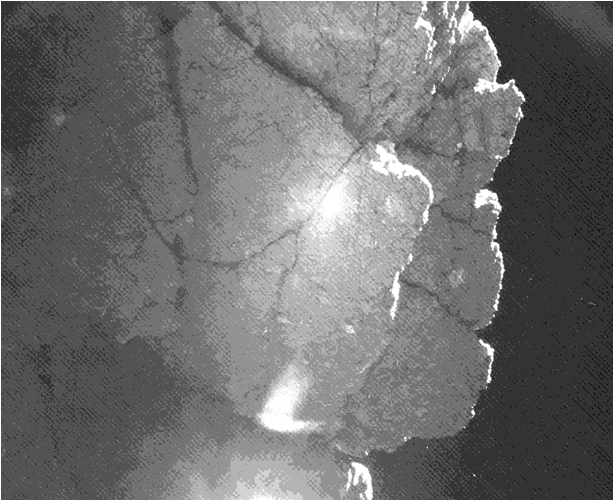
On the morning of September 7, the Soyuz TMA-20M machine returned cosmonauts Alexey Ovchinnikov and Oleg Skripochka and astronaut Jeffrey Williams to Earth. Enjoy the beauty of the cosmic routine .

On the night of September 8–9, NASA’s OSIRIS-REx spacecraft was launched to the Bennu asteroid . According to the plan, he will reach the asteroid in 2018, and will return with samples of materials in 2023. And this is not the first
Read more about what spacecraft brought us materials from other space objects.

Ilona Mask's old dream is to send a man to Mars. And he is slowly but surely approaching her. In late September, his company SpaceX tested the Raptor engine , which is planned to be used for flight to the Red Planet.
A little later, Musk presented a plan for the colonization of Mars , as promised in early 2016. The new rocket will have to deliver up to 100 tons of cargo to the planet, five Raptor engines will be installed on it.
The first people to go to Mars are likely to die. These will be the best representatives of humanity, and they will open the way for everyone else.
Ilon Musk in the Ask Me Anything session on Reddit answered the questions about the foundation of the Martian base. And here, read about what other projects were devoted to human life on Mars, and on this link - about Martian plans .
Jeff Bezos, in turn, believes that man must colonize not only the planets, but also outer space.
Boeing wants to overtake Ilona Mask and have time to make the near-moon and Martian bases in the 2030s. The company already has experience of participation in Apollo. And it was Boeing that built the first stage of the Saturn-5 rocket, the most lifting and powerful in the history of mankind. The other two stages were produced by companies that later became part of the "Boeing".

In the space industry in 2016, another player appeared - the airline S7. She bought the Space Launch Commander spacecraft together with the Odyssey platform with space launch equipment and ground equipment at the port of Long Beach in the United States.
The airline plans to make 70 starts in the next 15 years. Approximately launches will begin at the end of 2018.

In Russia, meanwhile, Design Bureau. Khrunichev plans to make new modifications of the Proton launch vehicle - medium and light versions. And in 2018 the average "Proton" will be launched into space. For new models of rockets use proven configurations: the first stage and the head fairing will repeat those in the Proton-M. From the second stage will refuse to reduce the cost of launch.
But how and why do the rockets lose weight ? Explains lozga .

On September 15, China launched the Tiangong-2 orbital station. The station will become a docking module for Chinese spacecraft "Shenzhou" and a base for subsequent modules, the third of which will go into orbit in 2022.
A month later, “Shenchzhou-11” went to the station with two taikonauts . Jing Haipeng, 50, and Chen Dong , 37, moved to the Tiangong 2 lab on October 18 and successfully returned to Earth on November 17.
A total of taikonaut spent at the station for 30 days. It is worth noting that the Tyangun-2 is incomparably small compared to the International Space Station, and so far consists of only one module. This is a clone "Salute", that is, in size it is - as one module "Star".
China has big plans : they are going to send probes to the dark side of the Moon, Mars and Jupiter until 2030.


Blue Origin in September introduced a new rocket - New Glenn , and in October conducted a test of the crew rescue system in the rocket New Shepard, already four times in space. And the same returning rocket was sent.
While SpaceX returns the first step from space, Jeffrey Bezos’s Blue Origin is approaching to start launching tourists to a height of more than one hundred kilometers, conditionally accepted as the boundary between atmosphere and space.
The rocket rescue system is critical to launching people into space. On January 28, 1986, the Challenger shuttle at the very beginning of the flight collapsed due to the explosion of an external fuel tank. All 7 crew members died. Then the ship did not have a rescue system. After this tragedy, engineers thought about possible solutions .

What other reusable ships flew into space or prepared for this? We recall the "Space Shuttle", "Buran", "Boeing X-37" and "Spiral" and look forward to the "Federation".

NASA allowed private companies to attach modules to the International Space Station. This is done in preparation for the flight to Mars , for testing residential modules and testing the protection from cosmic rays . Ionizing radiation will lead to dementia and memory loss .
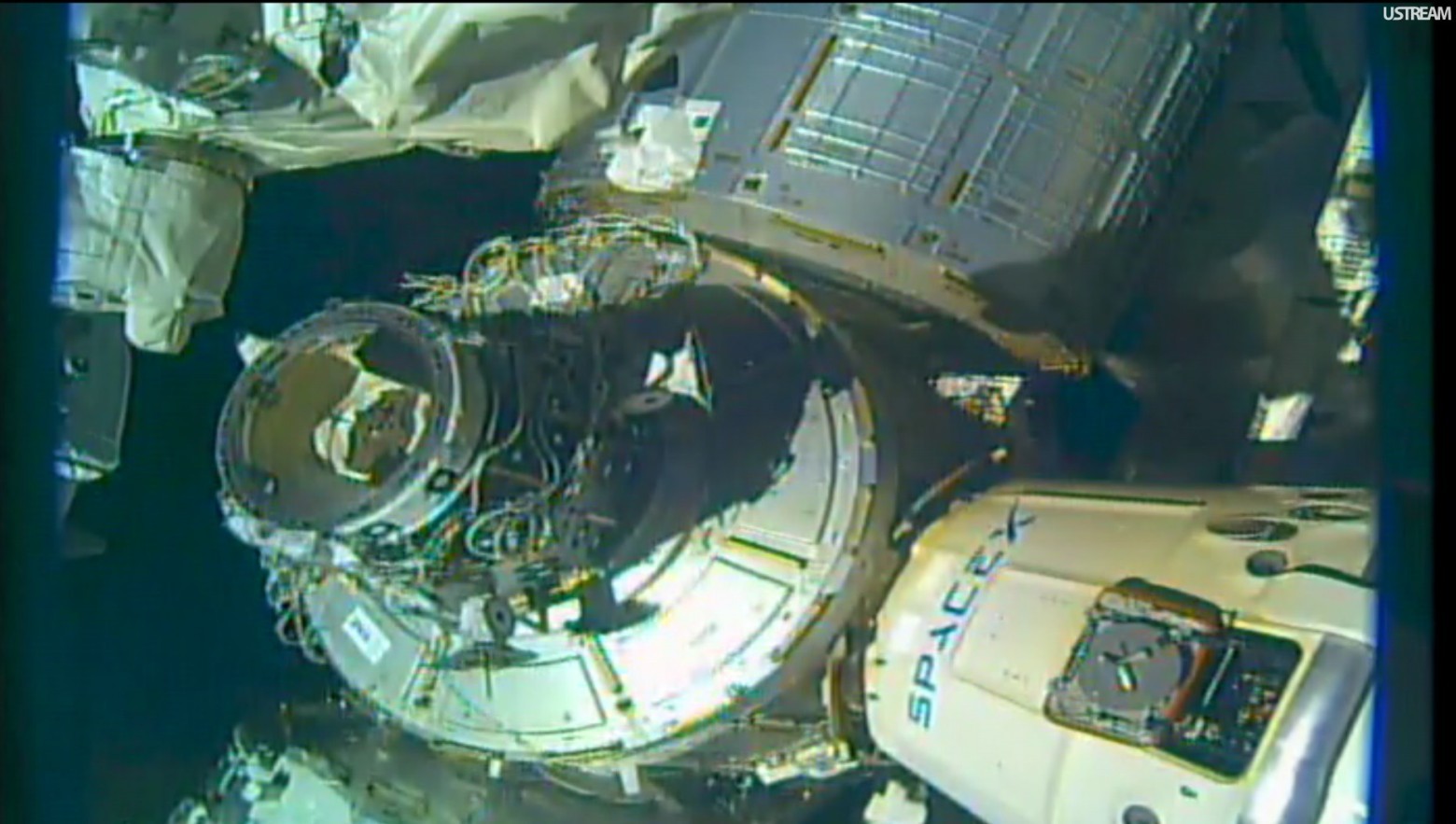
The Exomars device, launched on March 14, 2016, entered the Mars orbit on October 16 and sent the Schiaparelli probe to the surface of the planet on October 19.
The probe, unfortunately, crashed . At an altitude of 11 kilometers above the Schiaparelli, the parachute turned. According to the ESA version, 50 seconds before landing, the parachute had been shot earlier than planned, and the engines shut down earlier than necessary. The on-board computer decided that the landing was complete. The Mars Reconnaissance Orbiter, a Mars orbiter, helped to locate the probe's fall.
Of the 50 vehicles launched to Mars, 30 did not fulfill their task. Why is this happening? And now - positive: about the devices that could .
At the end of November 2016, the European Space Agency and Roscosmos published the first results of scientific observations "ExoMars-2016".
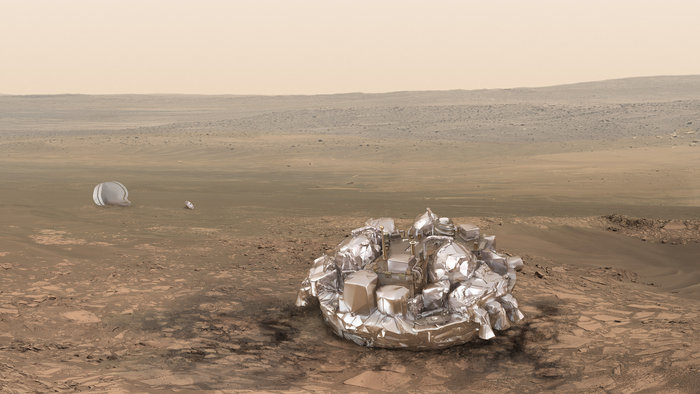
On October 15, 2016, scientist Klim Ivanovich Churyumov, known to us as the discoverer of the comet Churyumov-Gerasimenko, passed away. Read the translation of an article about him: “One of the stars and comets” .
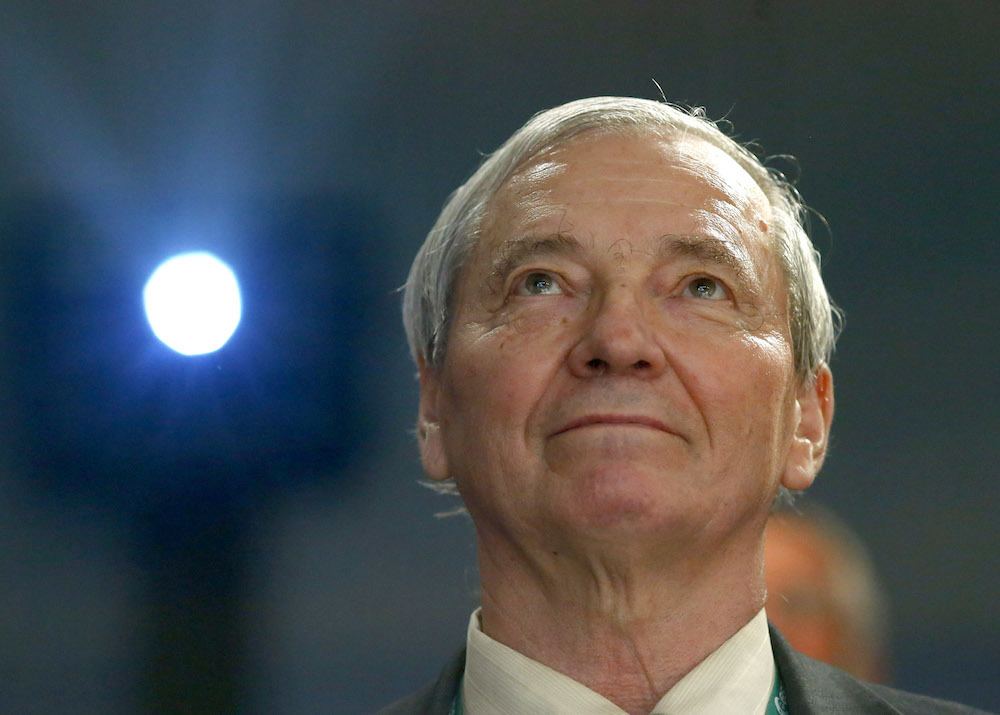
Zelenyikot in October looked into the Energy and Rocket and Space Corporation. Read about the history of the company, which opened the way to space for humanity.
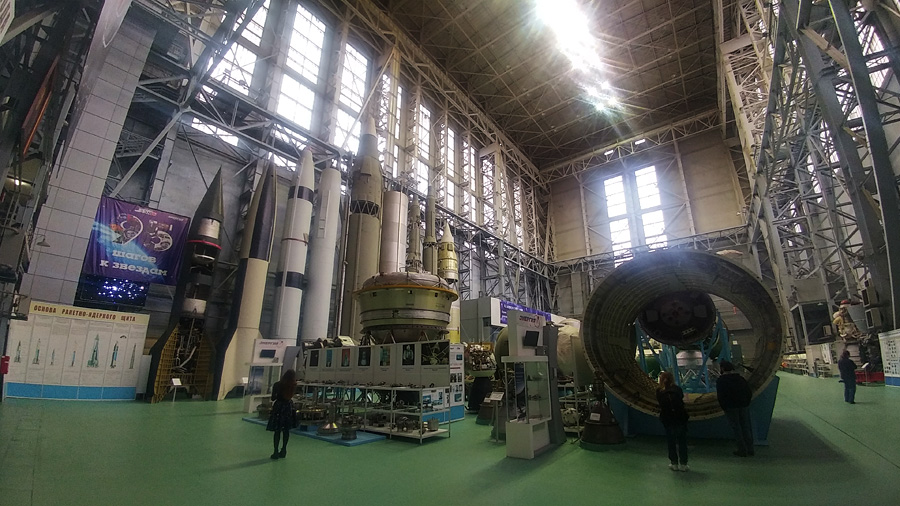
The Ilona Mask company SpaceX in November submitted a request to launch 4,425 satellites . In addition, another 2 satellites are planned for each of the 83 orbital planes - that is, 4,591 satellites in total. The ambitiousness of the project is already visible in the numbers: with all of this, mankind has “littered” 4.5 thousand satellites in orbit, of which only one and a half thousand are functioning ... Perhaps this company needed the news for additional attention to it. Or to divert attention from the Falcon 9 crash .

November 11, 2016 on the Russian screens came the film "Arrival". The film's scientific consultant Stephen Wolfram told how an alien spacecraft could work. Wolfram was often annoyed, thinking that in films with a good budget there are frank blunders that can be easily corrected. Therefore, he enthusiastically took up the support of the new picture.

In 2016, Russian cosmonaut Mikhail Kornienko and NASA astronaut Scott Kelly returned from a nearly one-year stay at the International Space Station. For a long time in orbit, they underwent tests that allowed scientists to obtain a lot of data to study the effect of microgravity on muscles and bone tissue, on vision, on the redistribution of body fluids. Scott Kelly on Earth was waiting for his twin brother - an analysis of the twin indicators will help to understand how organisms of two genetically identical people react to the environment.
NASA is already developing five new annual missions similar to this one.
By the way, NASA has prepared a tour of the ISS in 4K .
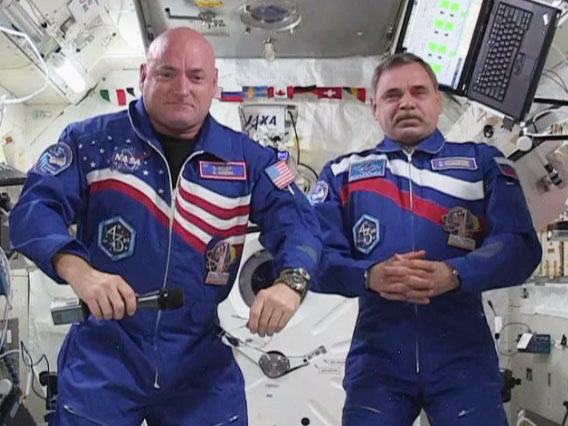
On December 1, 2016, the Soyuz-U carrier rocket was launched from Baikonur, which was to put into orbit the Progress MS-04 transport cargo ship of the delivery of 2.5 tons of cargo to the International Space Station, including refueling fuel, food and air for the crew of the ISS, could not reach the calculated orbit, burned in the atmosphere and fell in Tuva.
The shutdown of telemetry at 383 seconds of flight and the fall of a truck after burning in the atmosphere made it difficult to ascertain the causes of the accident . The investigation continues with the participation of experts from NASA.
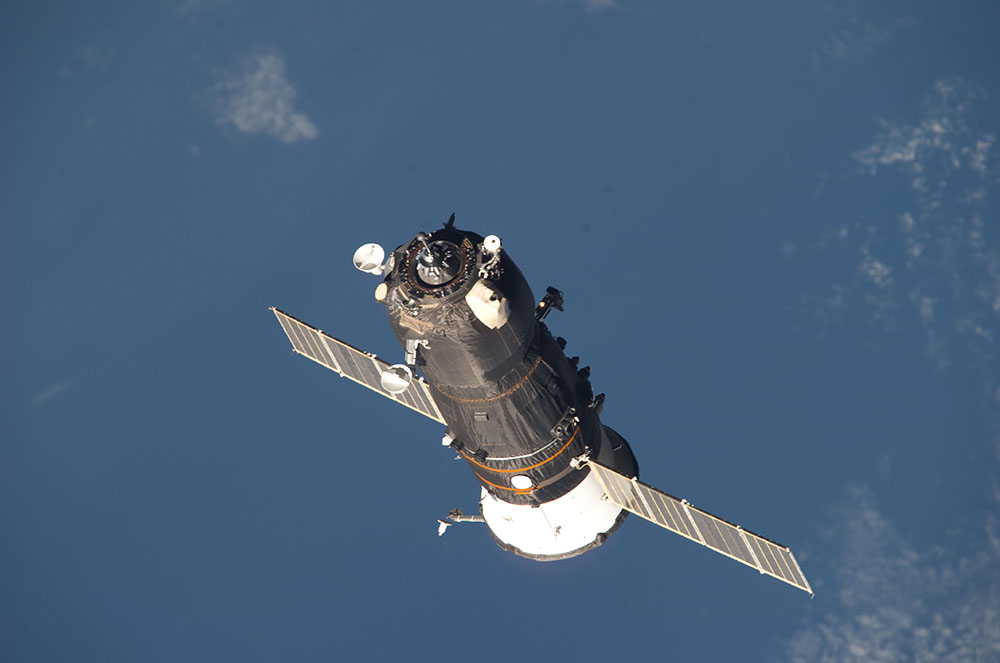
On October 15, 1997, the Cassini spacecraft set off on a long journey. This automatic interplanetary station flew twice near Venus, passed near the Earth, flew past Jupiter, and reached Saturn by June 30, 2004, becoming its first artificial satellite.
In November 2016, the Cassini began to move from the pole to the pole of the planet, and in December sent the first pictures of Saturn from a new orbit.
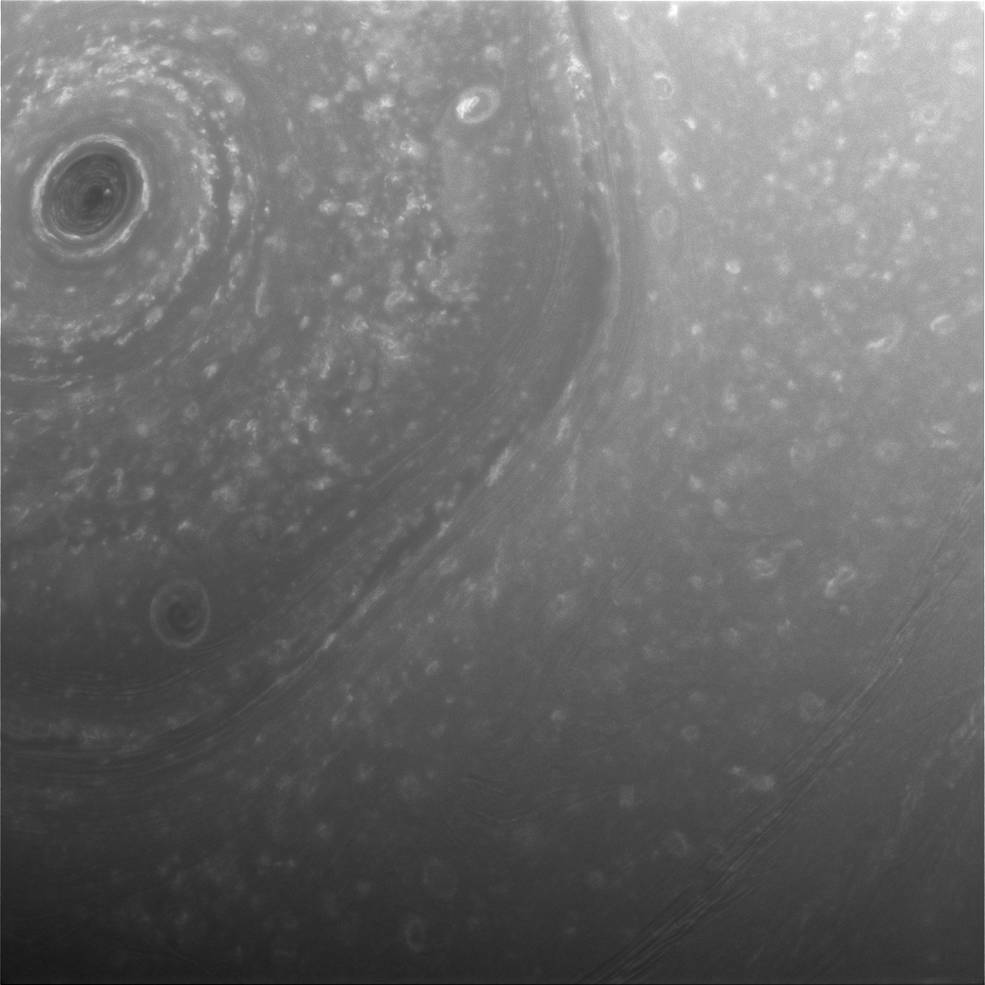
On December 8, 2016, John Glenn , the first American to fly around the Earth in a spacecraft, died . He made his last flight into space at the age of 77, 36 years after the first. He was the last of the first set of US astronauts, who lived to 2016.
Another explosion occurred on Earth in December. On the 44th anniversary of the last man’s step on the Moon in Moscow, during the fire tests of the first liquid rocket engine “Lin Industrial” an explosion occurred, a metal fragment flew twenty meters, broke a fence and damaged a wrist joint of a worker not involved in the space industry.
Here is a more detailed analysis of the situation.
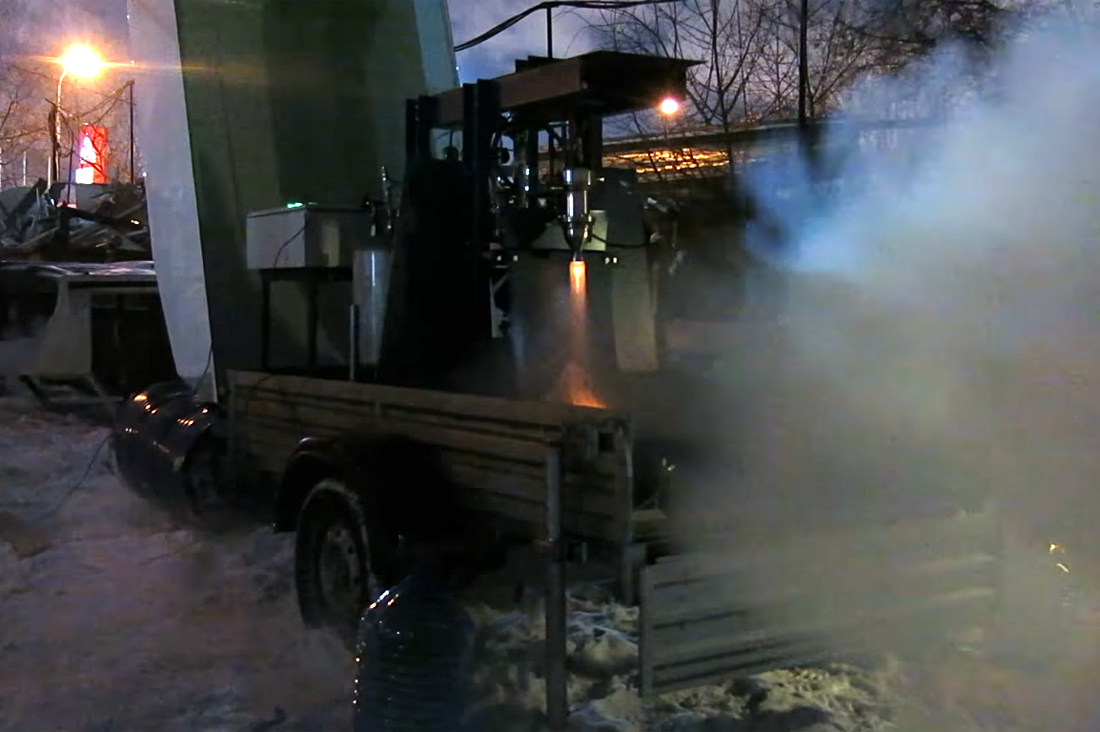
In December, NASA launched the Orbital ATK Pegasus XL rocket from the L-1011 Stargazer aircraft, which in turn rendered a constellation of Cyclone satellites Global Navigation Satellite System.
The eight satellites will study the meteorological and climatic conditions of a number of regions of the planet: they will help determine the intensity of hurricanes and tropical cyclones in the zone where they most often occur. The devices will study the mutual influence of the ocean surface, the thermodynamics of atmospheric humidity, radiation and convective dynamics.

Located in Chile, the Very Large Telescope (Very Large Telescope, VLT) allows scientists to look into corners of the Universe that are extremely distant from Earth. Project participants created a 3D map of 90,000 distant galaxies .

To finish our analysis of 2016, I propose photographs dedicated to the enduring beauty of the cosmos and the beauty of working space technology .

→ Astronautics 2016 on Geektimes, part 1
→ Astronautics 2016 on Geektimes, part 2

September 2016 for the space company Ilona Mask SpaceX began with an accident. At the launch site on Cape Canaveral, in preparation for the launch of the Falcon 9 rocket, an explosion occurred . In the analysis of the possible causes of the incident from lozga , components are leaked and short-circuited, leakage from the ignition system, impaired oxygen purity and erroneous detonation system operation. The main version of SpaceX experts called helium leakage in the cryogenic system of the second-stage oxygen tank of the rocket.
')
Together with the Falcon 9, the Israeli telecommunications satellite Amos-6 was destroyed. He was to go into orbit on September 3 to replace his outgoing Amos-2, as well as work for Facebook as part of the Internet.org project.
Failure SpaceX was on hand to competitors of the company - United Launch Alliance (ULA). The head of ULA was confident that SpaceX would be Earth bound for several months. But Musk has scheduled new launches as early as November 2016.

September 2, it became known about the unsuccessful launch of the Chinese rocket Long March 4C. Usually, the media in this country announce space launches only 40 minutes after a successful launch, but this time they remained silent for two days.
Fragments of the first stage were found 600 kilometers from the start, and 1050 kilometers from the cosmodrome found the remains of the head fairing.


Phillip Terekhov lozga gave a lecture on “ Subtle complications of space technology” , where he spoke about the intricacies of transporting a rocket, starting an engine without an explosion and how not to get lost in space.
Independent scientist José Rodal confirmed the examination by NASA's Eagleworks Laboratories project to achieve thrust using EmDrive.
Technology inventor Roger Scheuer, who has been ridiculed since 1999, is already working on EmDrive 2.0. In 2017, an analogue of such an engine can be launched into space on the satellite Cannae Drive.

“Phyla found!” In photographs taken a month before the end of the “Rosetta” mission, we found a descent module, which we worried about for so long. The last time we saw "Fila" on November 12, 2014, and then found it on September 2. After touching, the device bounced off and flew over the surface of comet Churyumov-Gerasimenko for about two hours until it was caught in the stones under the cliff of Perihelion.

Fila himself sees this rock from a different angle.

On the morning of September 7, the Soyuz TMA-20M machine returned cosmonauts Alexey Ovchinnikov and Oleg Skripochka and astronaut Jeffrey Williams to Earth. Enjoy the beauty of the cosmic routine .

On the night of September 8–9, NASA’s OSIRIS-REx spacecraft was launched to the Bennu asteroid . According to the plan, he will reach the asteroid in 2018, and will return with samples of materials in 2023. And this is not the first
Read more about what spacecraft brought us materials from other space objects.

Ilona Mask's old dream is to send a man to Mars. And he is slowly but surely approaching her. In late September, his company SpaceX tested the Raptor engine , which is planned to be used for flight to the Red Planet.
A little later, Musk presented a plan for the colonization of Mars , as promised in early 2016. The new rocket will have to deliver up to 100 tons of cargo to the planet, five Raptor engines will be installed on it.
The first people to go to Mars are likely to die. These will be the best representatives of humanity, and they will open the way for everyone else.
Ilon Musk in the Ask Me Anything session on Reddit answered the questions about the foundation of the Martian base. And here, read about what other projects were devoted to human life on Mars, and on this link - about Martian plans .
Jeff Bezos, in turn, believes that man must colonize not only the planets, but also outer space.
Boeing wants to overtake Ilona Mask and have time to make the near-moon and Martian bases in the 2030s. The company already has experience of participation in Apollo. And it was Boeing that built the first stage of the Saturn-5 rocket, the most lifting and powerful in the history of mankind. The other two stages were produced by companies that later became part of the "Boeing".

In the space industry in 2016, another player appeared - the airline S7. She bought the Space Launch Commander spacecraft together with the Odyssey platform with space launch equipment and ground equipment at the port of Long Beach in the United States.
The airline plans to make 70 starts in the next 15 years. Approximately launches will begin at the end of 2018.

In Russia, meanwhile, Design Bureau. Khrunichev plans to make new modifications of the Proton launch vehicle - medium and light versions. And in 2018 the average "Proton" will be launched into space. For new models of rockets use proven configurations: the first stage and the head fairing will repeat those in the Proton-M. From the second stage will refuse to reduce the cost of launch.
But how and why do the rockets lose weight ? Explains lozga .

On September 15, China launched the Tiangong-2 orbital station. The station will become a docking module for Chinese spacecraft "Shenzhou" and a base for subsequent modules, the third of which will go into orbit in 2022.
A month later, “Shenchzhou-11” went to the station with two taikonauts . Jing Haipeng, 50, and Chen Dong , 37, moved to the Tiangong 2 lab on October 18 and successfully returned to Earth on November 17.
A total of taikonaut spent at the station for 30 days. It is worth noting that the Tyangun-2 is incomparably small compared to the International Space Station, and so far consists of only one module. This is a clone "Salute", that is, in size it is - as one module "Star".
China has big plans : they are going to send probes to the dark side of the Moon, Mars and Jupiter until 2030.


Blue Origin in September introduced a new rocket - New Glenn , and in October conducted a test of the crew rescue system in the rocket New Shepard, already four times in space. And the same returning rocket was sent.
While SpaceX returns the first step from space, Jeffrey Bezos’s Blue Origin is approaching to start launching tourists to a height of more than one hundred kilometers, conditionally accepted as the boundary between atmosphere and space.
The rocket rescue system is critical to launching people into space. On January 28, 1986, the Challenger shuttle at the very beginning of the flight collapsed due to the explosion of an external fuel tank. All 7 crew members died. Then the ship did not have a rescue system. After this tragedy, engineers thought about possible solutions .

What other reusable ships flew into space or prepared for this? We recall the "Space Shuttle", "Buran", "Boeing X-37" and "Spiral" and look forward to the "Federation".

NASA allowed private companies to attach modules to the International Space Station. This is done in preparation for the flight to Mars , for testing residential modules and testing the protection from cosmic rays . Ionizing radiation will lead to dementia and memory loss .

The Exomars device, launched on March 14, 2016, entered the Mars orbit on October 16 and sent the Schiaparelli probe to the surface of the planet on October 19.
The probe, unfortunately, crashed . At an altitude of 11 kilometers above the Schiaparelli, the parachute turned. According to the ESA version, 50 seconds before landing, the parachute had been shot earlier than planned, and the engines shut down earlier than necessary. The on-board computer decided that the landing was complete. The Mars Reconnaissance Orbiter, a Mars orbiter, helped to locate the probe's fall.
Of the 50 vehicles launched to Mars, 30 did not fulfill their task. Why is this happening? And now - positive: about the devices that could .
At the end of November 2016, the European Space Agency and Roscosmos published the first results of scientific observations "ExoMars-2016".

On October 15, 2016, scientist Klim Ivanovich Churyumov, known to us as the discoverer of the comet Churyumov-Gerasimenko, passed away. Read the translation of an article about him: “One of the stars and comets” .

Zelenyikot in October looked into the Energy and Rocket and Space Corporation. Read about the history of the company, which opened the way to space for humanity.

The Ilona Mask company SpaceX in November submitted a request to launch 4,425 satellites . In addition, another 2 satellites are planned for each of the 83 orbital planes - that is, 4,591 satellites in total. The ambitiousness of the project is already visible in the numbers: with all of this, mankind has “littered” 4.5 thousand satellites in orbit, of which only one and a half thousand are functioning ... Perhaps this company needed the news for additional attention to it. Or to divert attention from the Falcon 9 crash .

November 11, 2016 on the Russian screens came the film "Arrival". The film's scientific consultant Stephen Wolfram told how an alien spacecraft could work. Wolfram was often annoyed, thinking that in films with a good budget there are frank blunders that can be easily corrected. Therefore, he enthusiastically took up the support of the new picture.

In 2016, Russian cosmonaut Mikhail Kornienko and NASA astronaut Scott Kelly returned from a nearly one-year stay at the International Space Station. For a long time in orbit, they underwent tests that allowed scientists to obtain a lot of data to study the effect of microgravity on muscles and bone tissue, on vision, on the redistribution of body fluids. Scott Kelly on Earth was waiting for his twin brother - an analysis of the twin indicators will help to understand how organisms of two genetically identical people react to the environment.
NASA is already developing five new annual missions similar to this one.
By the way, NASA has prepared a tour of the ISS in 4K .

On December 1, 2016, the Soyuz-U carrier rocket was launched from Baikonur, which was to put into orbit the Progress MS-04 transport cargo ship of the delivery of 2.5 tons of cargo to the International Space Station, including refueling fuel, food and air for the crew of the ISS, could not reach the calculated orbit, burned in the atmosphere and fell in Tuva.
The shutdown of telemetry at 383 seconds of flight and the fall of a truck after burning in the atmosphere made it difficult to ascertain the causes of the accident . The investigation continues with the participation of experts from NASA.

On October 15, 1997, the Cassini spacecraft set off on a long journey. This automatic interplanetary station flew twice near Venus, passed near the Earth, flew past Jupiter, and reached Saturn by June 30, 2004, becoming its first artificial satellite.
In November 2016, the Cassini began to move from the pole to the pole of the planet, and in December sent the first pictures of Saturn from a new orbit.

On December 8, 2016, John Glenn , the first American to fly around the Earth in a spacecraft, died . He made his last flight into space at the age of 77, 36 years after the first. He was the last of the first set of US astronauts, who lived to 2016.
Another explosion occurred on Earth in December. On the 44th anniversary of the last man’s step on the Moon in Moscow, during the fire tests of the first liquid rocket engine “Lin Industrial” an explosion occurred, a metal fragment flew twenty meters, broke a fence and damaged a wrist joint of a worker not involved in the space industry.
Here is a more detailed analysis of the situation.

In December, NASA launched the Orbital ATK Pegasus XL rocket from the L-1011 Stargazer aircraft, which in turn rendered a constellation of Cyclone satellites Global Navigation Satellite System.
The eight satellites will study the meteorological and climatic conditions of a number of regions of the planet: they will help determine the intensity of hurricanes and tropical cyclones in the zone where they most often occur. The devices will study the mutual influence of the ocean surface, the thermodynamics of atmospheric humidity, radiation and convective dynamics.

Located in Chile, the Very Large Telescope (Very Large Telescope, VLT) allows scientists to look into corners of the Universe that are extremely distant from Earth. Project participants created a 3D map of 90,000 distant galaxies .

To finish our analysis of 2016, I propose photographs dedicated to the enduring beauty of the cosmos and the beauty of working space technology .

Source: https://habr.com/ru/post/400397/
All Articles